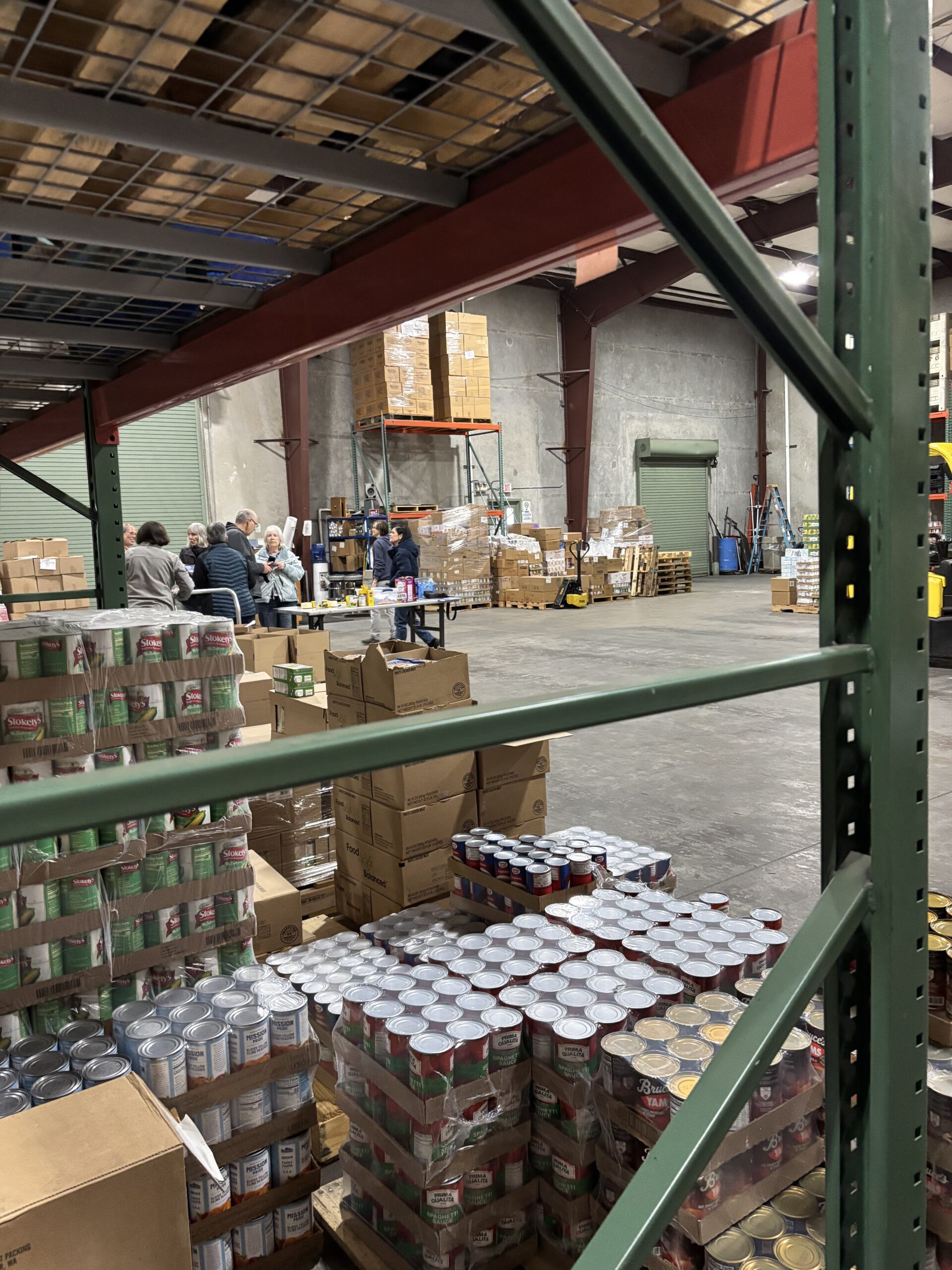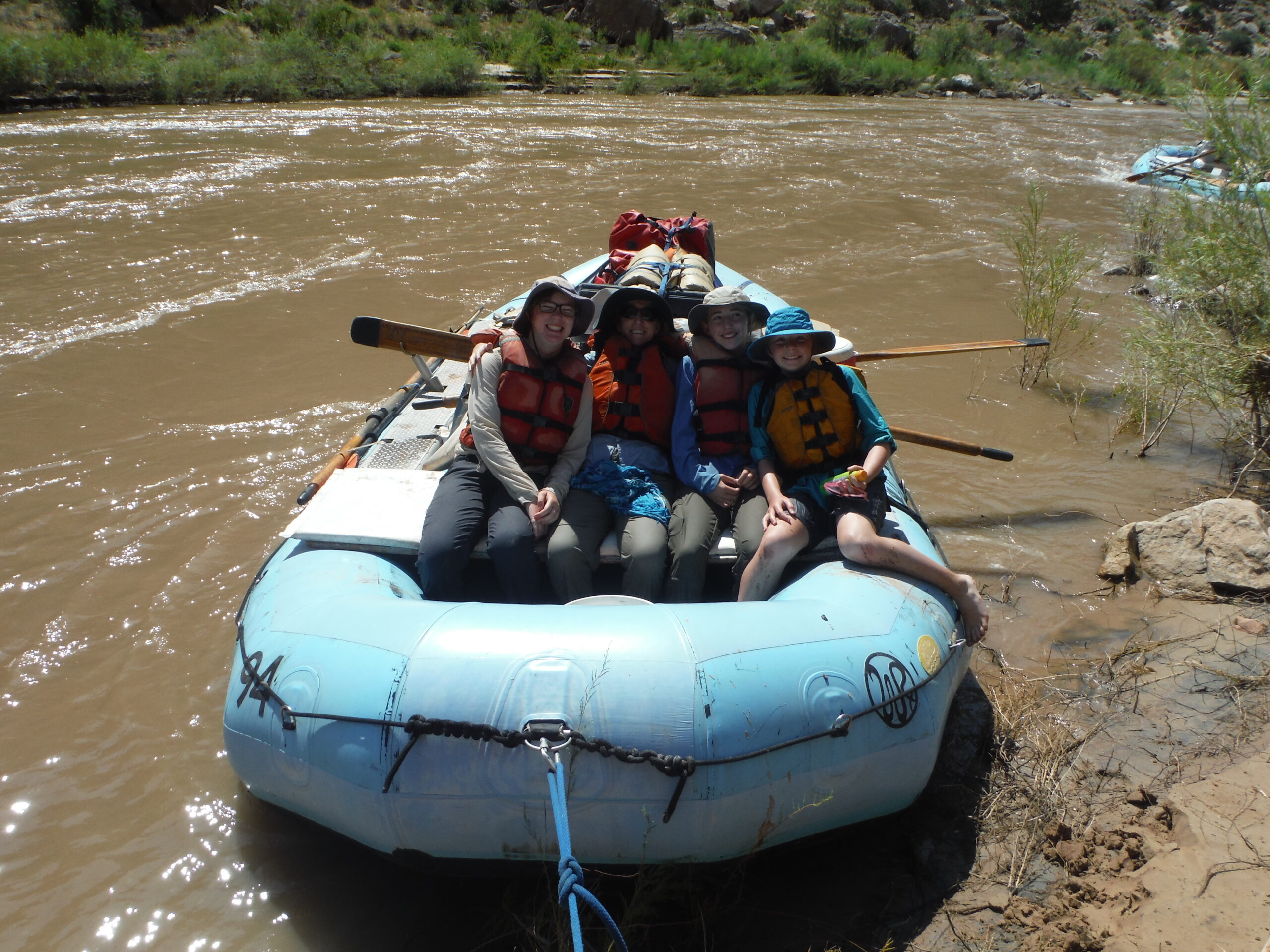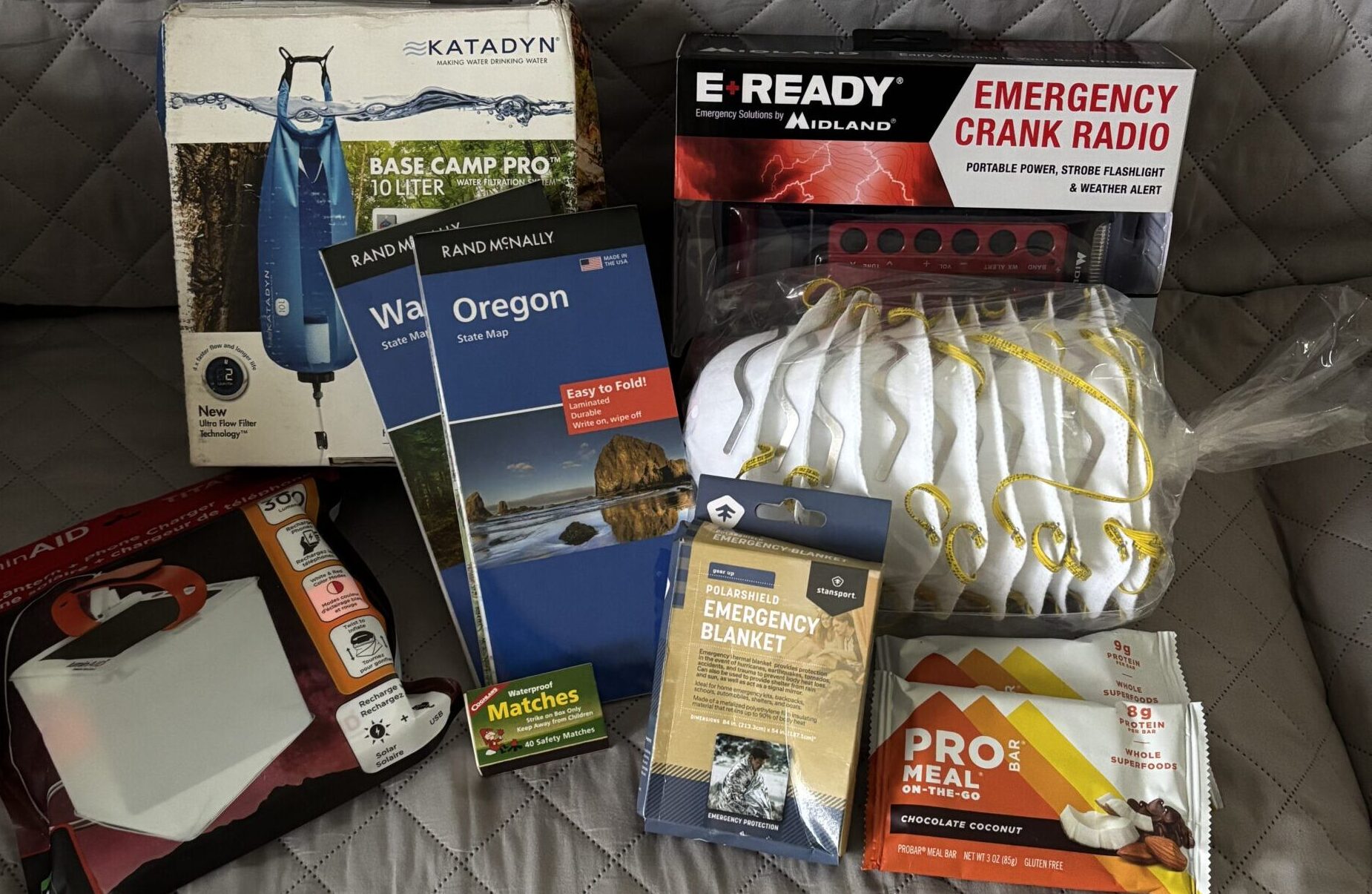Just before 9 AM on a Tuesday in mid-November, I pull in to the gravel parking lot of a green warehouse in Tangent, Oregon. This building belongs to Linn-Benton Food Share, which distributes food at no cost to folks throughout Linn and Benton Counties. I’m here to volunteer to pack food into around 450 boxes, which we then load onto pallets so they can be distributed to organizations such as food pantries and gleaning groups throughout our two-county region.
There are 5 new volunteers here today, along with an equal number of veterans. I’m impressed right away by how well-organized the operation is. From the layout of the food to the printed food lists and directions from staff and experienced volunteers, it’s carefully designed to run smoothly. Within a few minutes, I’m fully trained and packing food. The tasks of labeling boxes, filling them with the proper items, closing them up and loading them on pallets based on where they’ll go goes quickly, even with so many new folks. After our 2 hour shift I admire the neatly stacked cubes of full boxes on pallets ready to make there way out to fill peoples’ bellies.
This warehouse has been here for many years, but this is my first time inside. I’m not proud to admit this, but I hadn’t focused all that much on hunger in our community until the Trump administration tried to withhold SNAP food assistance during the recent 43 day government shutdown. The many ways that decision rippled through our town, state, and country really got my attention. The enormity of the role SNAP plays for so many in our community woke me up to all I don’t usually see.
According to the Oregon Department of Human Services, about 757,000 people in Oregon, or about 1 in 6 people, rely on SNAP benefits to supplement their food budget. While SNAP provides support for folks to purchase food at participating grocery stores and Farmers’ Markets, Linn-Benton Food Share distributes food directly through a network of food pantries, meal sites, gleaning groups, and agencies. To get SNAP benefits, you must apply and meet eligibility requirements and income limits. However, no proof of income or documentation is required to receive food through the food bank system Linn-Benton Food Share is part of. The idea is that these two systems together provide a safety net to prevent hunger in America. The reality, however, is quite another matter.
As I’m packing, I ponder what’s going into each box. While this food could perhaps meet some basic nutritional needs, there are quite a few items here I wouldn’t eat unless I was really hungry. But there is also boxed milk, cereal, peanut butter, canned fruit, and pasta that are more appealing.
When I volunteered, I was told some of these boxes go to low-income seniors once a month. But we’re packing boxes for a variety of destinations. I wonder how many of the calories the recipients need are supplied by this box, and what they eat for the rest of the month. I wonder where the food box recipients get their fresh food. I wonder how many of the items I’m packing in each box get thrown away.
The two hour volunteer shift is a satisfying experience. The movements of packing and loading warm me up quickly in the chilly warehouse. The time goes fast, I chat with other volunteers, we finish packing all the boxes needed that day, and I get a peek into one of the components of a food assistance system I know very little about. I have many unanswered questions, but when I come back next month, I can learn more.
I’m here because the recent SNAP crisis and efforts by the Trump regime to take away food aid from the most vulnerable people has jolted me into taking action. Whatever else I may question, I don’t ever doubt that no one should go hungry in our community, state, or country.
I’m also here because I’m trying to understand, through volunteering, conversations, and research how the network of food assistance programs in our community works, how much it alleviates hunger and food insecurity, and how much it fails to do. I’ll keep posting about what I learn.




